An auto barn for the Volvo man
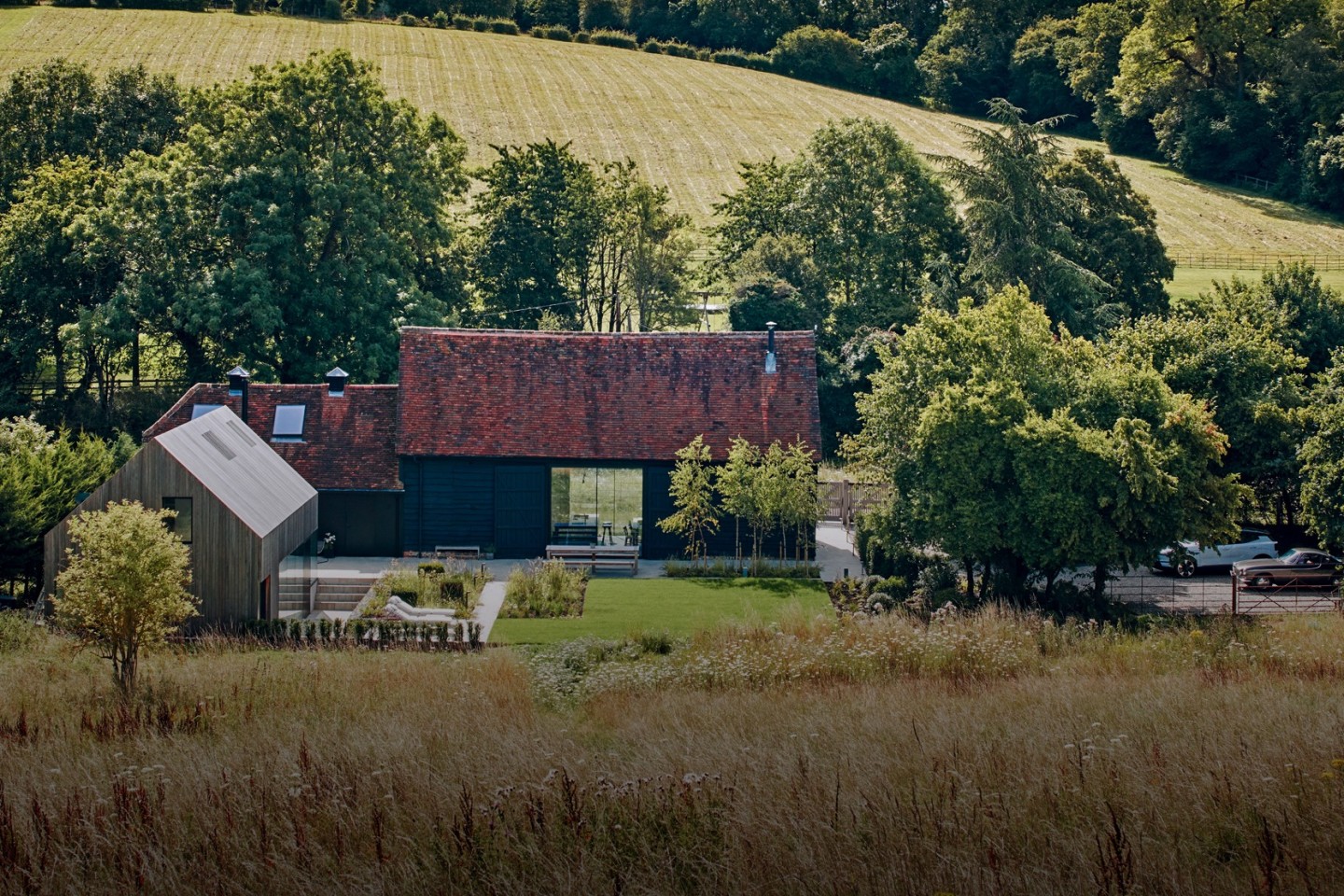
Roula Khalaf, Editor of the FT, selects her favourite stories in this weekly newsletter.
Outside Jeremy Offer’s home in the Chiltern hills stand two cars. One is a rare classic, a low-slung 1962 Volvo P1800 sports tourer of the kind Roger Moore drove in The Saint. The other is a pre-production model of a car that the new global head of design at Volvo believes is the company’s future: all-electric, with a quarter of its aluminium recycled (as well as a fifth of its steel and plastic), the boxy EX30 is a small family SUV that can go from 0-60mph in 3.4 seconds. It’s both supercar and sustainable runaround in one ultra-modern package.
Juxtaposed, they are a neat metaphor for what Offer and architects Luke McLaren and Rob Excell of McLaren Excell have achieved in their restoration of Offer’s Hunts Green Barn, where the old and the new sit side by side: not quite blended but coexisting in revelatory contrast.
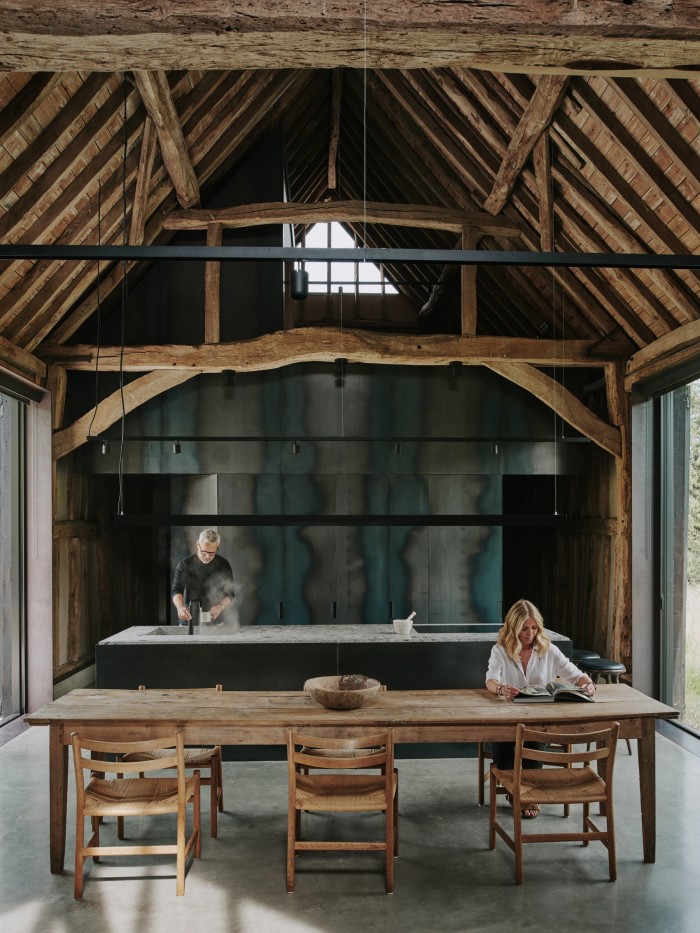
Offer has spent most of his career working in industrial design and consulting. Before moving to Volvo this year, he led the design team for the electric-vehicle start-up Arrival. Dressed in grey tracksuit bottoms, sneakers and a black sweatshirt with 1970s-style eyewear and neatly curated grey stubble, Offer exudes quintessential industrial designerliness. He and his wife, Mel, previously lived in “a beautiful open-plan ’70s house in Cheshire”. When Offer took the job at Arrival, which has its research and development base in London and a manufacturing facility in Banbury, he started looking for somewhere to live between the two. But they struggled to find a property: “We went to see a lot of places in the Cotswolds that were full of quaint little rooms, but not much light, not much space. So we figured the only way we were going to get what we wanted — with an open-plan environment inside — was to find somewhere we could do ourselves.”
After a six-month search they found Hunts Green Barn, and, looking for an architect, Offer discovered the work of McLaren Excell on Pinterest. Luke McLaren and Rob Excell are childhood friends. McLaren went on to study at Cambridge, the Royal College of Art and London Metropolitan University; Excell at Kingston University. McLaren subsequently worked on the Tate in St Ives and numerous domestic projects with Jamie Fobert Architects; Excell took a job at d-Raw Studios, designing offices, shop interiors and restaurants for clients including Reiss, Fenwick and Nyetimber.
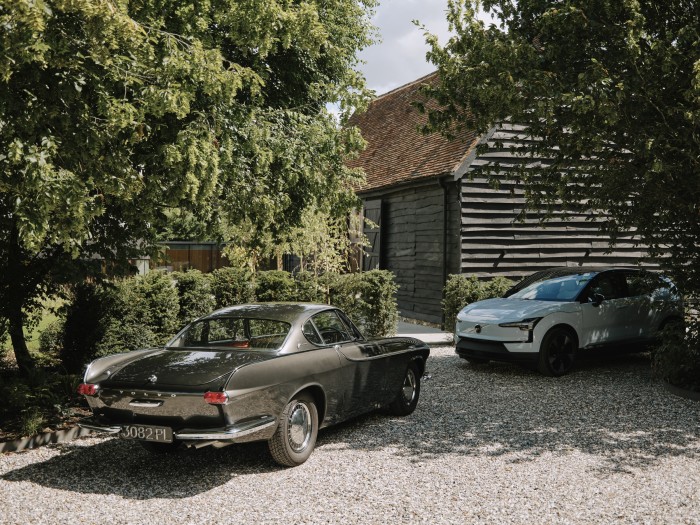
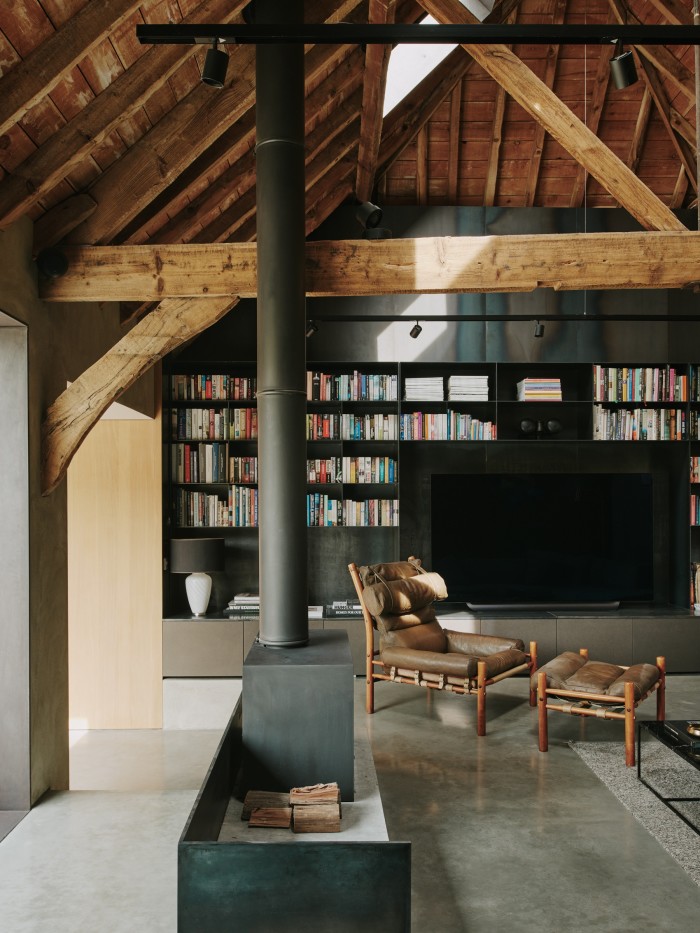
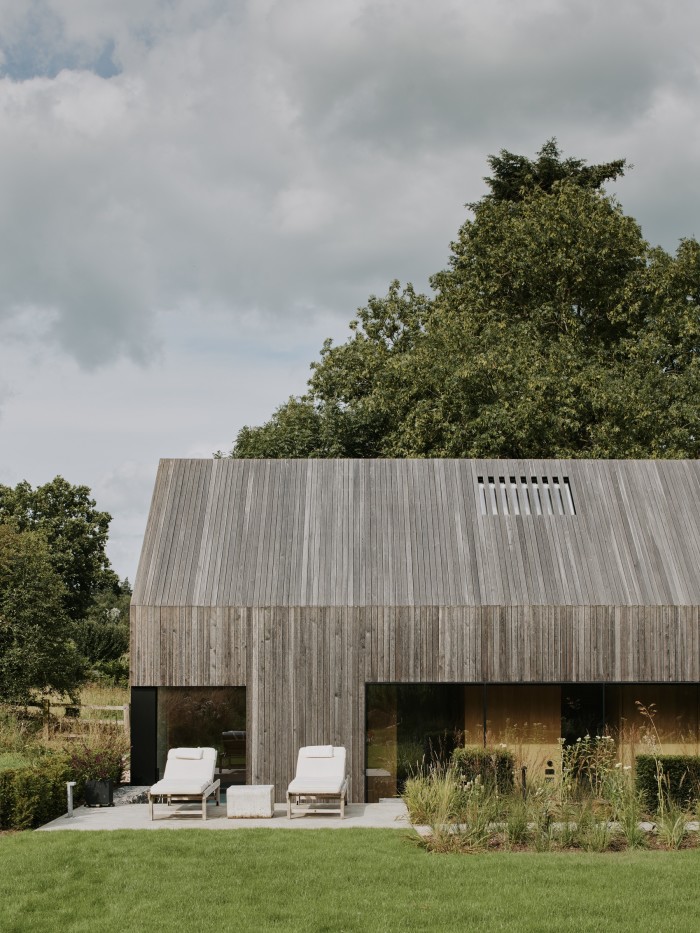
In 2010 they decided to set up their own practice and made their name creating award-winning modernist retrofits of period properties (Hunts Green Barn won awards in 2022 for both architect of the year and home transformation of the year at the British Homes Awards). The words “simple”, “clean” and “purity” crop up a lot when they talk about their work, as do granite, steel and polished concrete. “We were recognised for our contemporary work,” says Excell, “but also for dealing with listed buildings. And, for us, that juxtaposition of the new and the old has always been something that we feel enhances both sides in a project.”
The property consisted of two linked Grade II-listed former agricultural buildings: the larger one was originally a tithe barn; the smaller one a cart shed. The interior had already been converted to make a family home. “But really badly,” says McLaren. “Typically, when someone converts a barn they go, ‘How many partitions and floors and little tiny bedrooms and bathrooms can we fit into this space.’ In these two buildings, there were something like 12 rooms. So it was a case of removing all the rooms and starting again, but trying, as much as possible, not to touch any of the existing walls.”
McLaren Excell has revealed the building’s grandeur. The full-height main barn contains a kitchen — with an Italian Grigio Perla-stone island — that opens directly onto the main living room, with squashy brown leather sofas and an open fire at one end. Those sofas and the carpet are strewn with Offer’s trumpets — plus electric effects pedals: “I play jazz trumpet,” says Offer, who practises to take his mind off work. “I used to play in bands in the ’90s, but now it’s more like my meditation. And this room has great acoustics.” All the oak beams are on show and traditional lime render has been applied. Where beams have had to be replaced, there’s been no attempt to distress them. “It’s honest, it doesn’t try to be anything it isn’t,” says Offer.
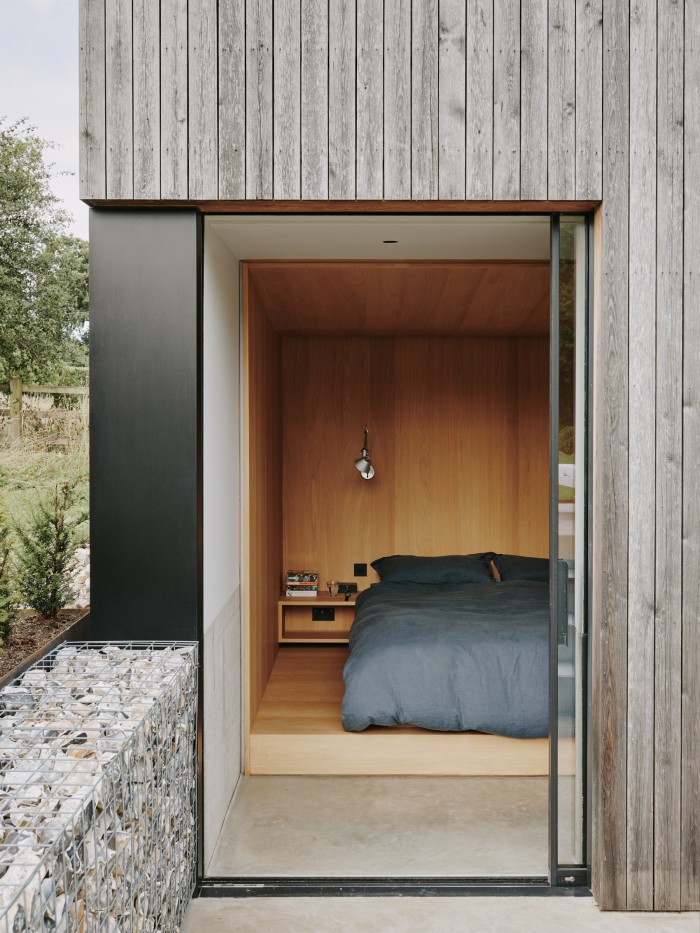
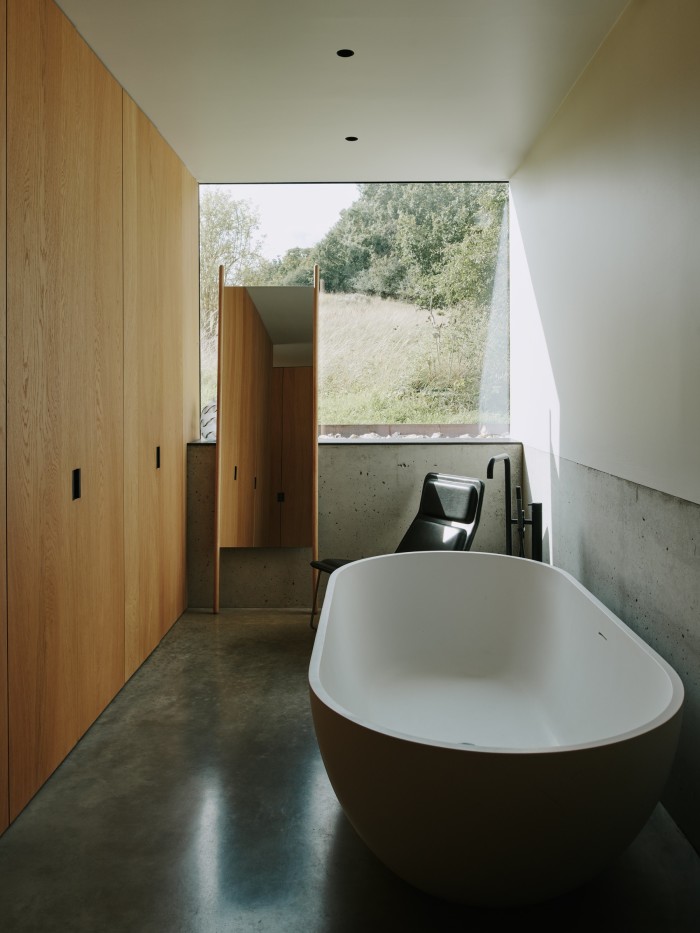
Daylight pours through full-height sliding glass doors on either side of the room. At night, clever use of electric lighting — pendant lamps just above head height on a suspended track rig — turn the barn into a warmer, more relaxing space. “It’s like it creates a false ceiling,” says McLaren.
Offer wanted an upstairs office in the main barn: to which end he now has a freestanding, floor-to-ceiling “pod” incorporating kitchen cupboards, oven, fridge and freezer at ground level, and a work room up a set of stairs. He originally imagined it clad in oak, but the architects had a more radical solution: a show-stopping wall of black steel with a pattern that looks like watered silk. “It’s called blueing,” says McLaren. “When you work with black steel long enough, you get to know all of its quirks and the strange things that happen across different thicknesses of steel. When you make something with 1.5mm steel you need to be aware that blueing will occur, like it or not, and I liked it,” he says of the painterly effect.
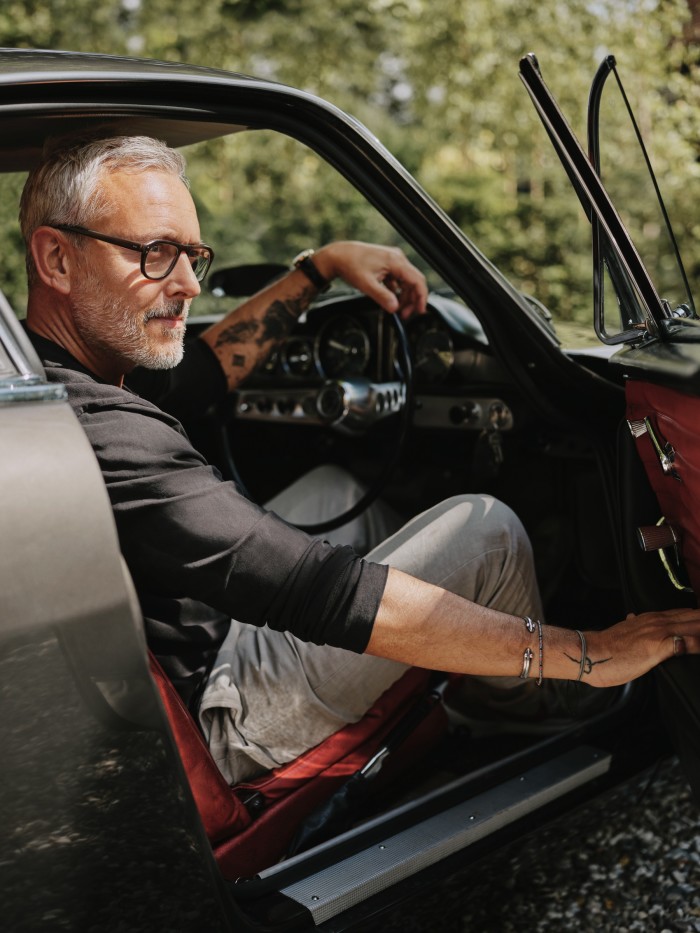
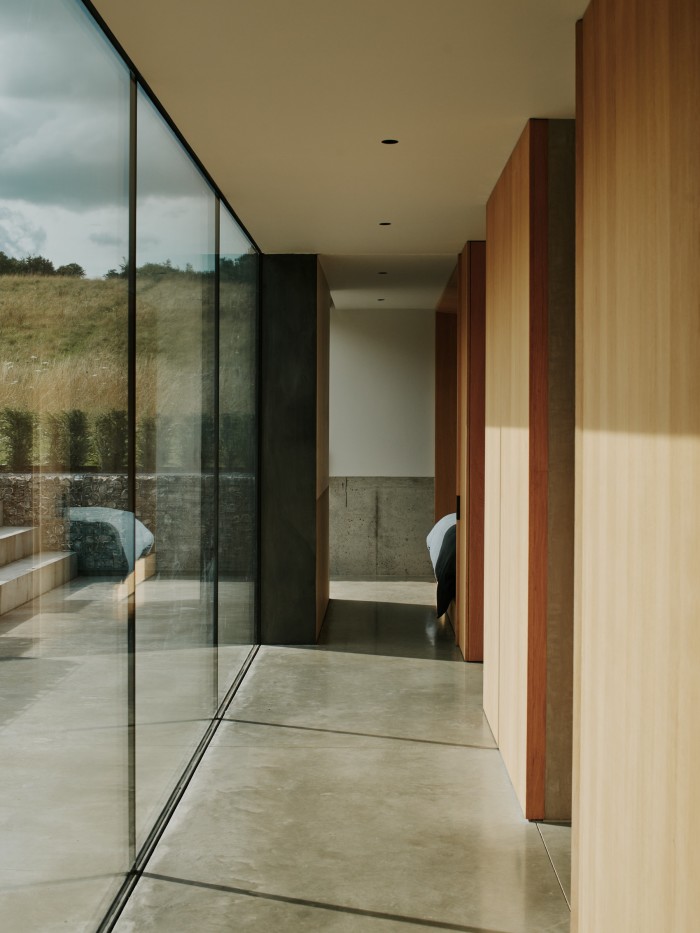
A tunnel beneath this pod leads to a smaller, more intimate living room in the cart shed, its floor, as everywhere else in the house, a shimmer of polished concrete. Here, the furniture reveals Offer’s taste for mid-century modern and pieces with a similar aesthetic. There are chairs by Arne Norell, a sofa by Living Divani and a black-marble Calder coffee table by Minotti. “I’ve been a big fan of that period for as long as I can remember,” he says. “There used to be a shop in Manchester called The Ginnel in the ’90s, before mid-century furniture really became popular. And Mel and I would go down there every week. We found Eames chairs for £100 each. It was a treasure trove. As was Brick Lane before the internet.” What’s on show is just the tip of the iceberg. “You’ve got a storage facility in Reading,” his wife prompts. “He’s got a chair obsession. I’m, like, ‘No more chairs.’”
A 90-degree turn out of this room leads down a shallow stairway to the bedroom wing, the only part of the project that is completely new. Its walls and roof are clad in larch, which started out orange but has “settled”, says McLaren, “to this lovely dusty, silvery grey”. Inside, there’s a Japanese minimalist groove, with shelves and storage hidden behind panels, and room dividers that slide back into secret notches inside the walls. The bathroom looks out onto the meadow. “We really liked the concept of someone lying in the bath looking through a kind of frameless picture window,” says McLaren. “But Jeremy, I don’t know if that’s how you use the bathroom?” “We use it to wash the dog a lot,” comes the rueful response.
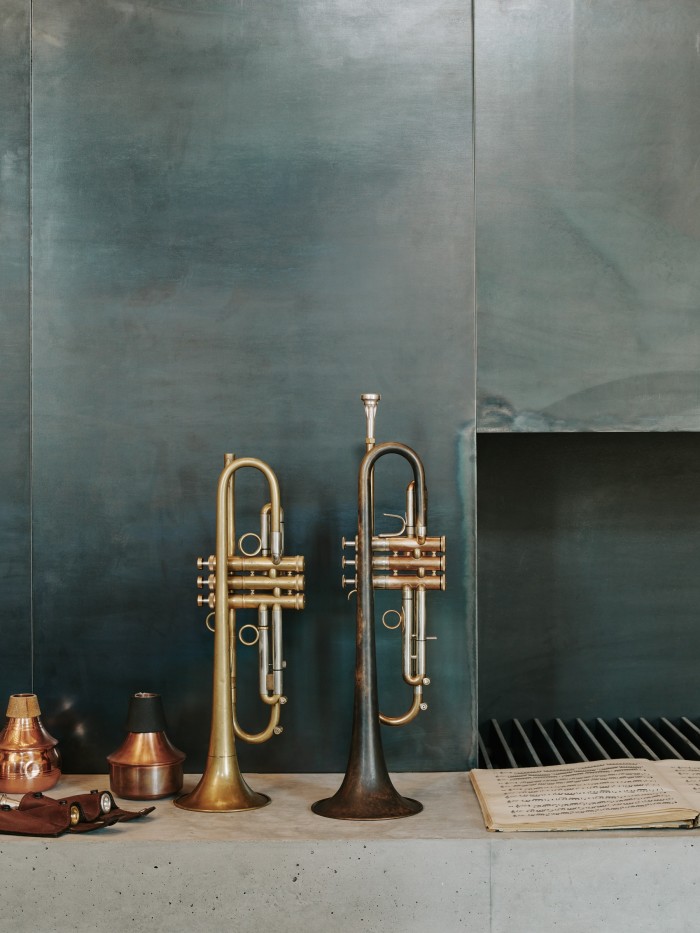
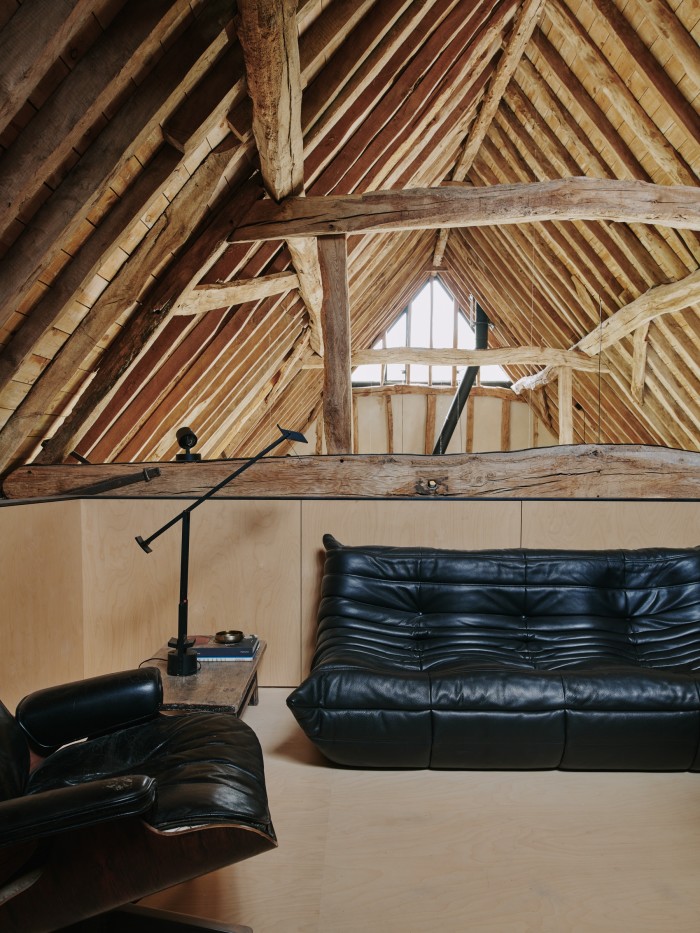
There’s historical romance to Offer’s home, but it’s underlined by a strict, modern pragmatism. Everywhere function leads form. Says Offer: “For me, whether it’s interiors, products, buildings or now cars, it’s always been function first and then the aesthetics born out of that function.” The house is heated via a massive ground-source heat pump. Sustainability was a key part of the architectural mandate, too.
Offer is the first chief designer in the world of motoring OEMs not to have forged his career there, and he hopes to bring a different sensibility to car design. “It’s less about the engines; we’re focusing on software and the user experience. Effectively what we’re designing now are devices on wheels. Of course, the traditional disciplines of car design are incredibly important: the poetry, the emotional response absolutely still needs to be there. But along with that it has to fit in with your lifestyle in terms of your digital footprint across work and home.”
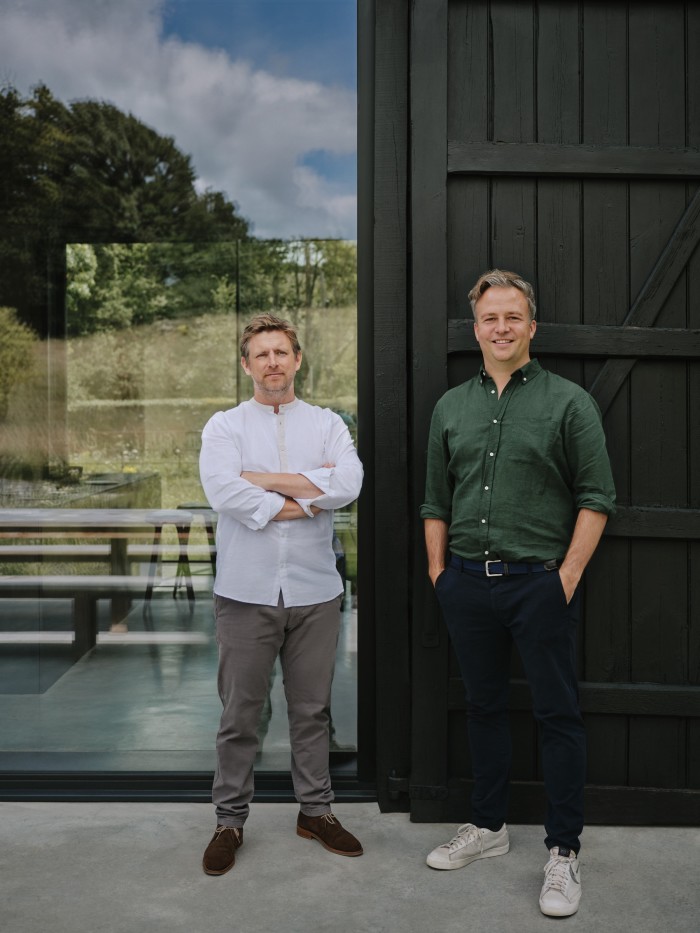
It’s not dissimilar to finding a way to house state-of-the-art materials within the historic structure of Hunts Green Barn. But, unlike the barn, Offer regards this moment as a great opportunity to radically rethink both the exterior and interior layout of cars: “I would say that [brands’ new EVs] don’t look different enough [from their internal-combustion-engine models]. Because without an engine up front, you can do more interesting things. But what we’re trying to do is maximise the interior space, and make more use of where the engine bay used to be.”
Offer has no illusions about the difficulties posed by the electric-charging infrastructure. “It’s all very well living out in the country with your own driveway. But when you’ve got hundreds of cars competing for a small number of charging points on a busy London street, that’s the challenge.” He’s confident the tech will get there. “We’ve got 300 miles on the charge for the top-level EX30. So battery (and software-management) technologies are improving all the time.”
As for the controversial issue of fully autonomous vehicles? “There are lots of moral questions around,” he says. “But I think the overall premise is that it has to happen, it will happen, it is just when — when the infrastructure can cope with it and when they’ve done all the checks and balances, to make sure it is safe.”
How radically the brand will change under his tenure remains to be seen, but if he brings the same respect for history to Volvo’s cars as he has to his home, it should be in safe hands. “To live in a space that has been here for 400 to 500 years, with the marks on the wood from the original people who constructed it, and the amount of effort that’s gone into building what is basically a shed, and then to repurpose it — there’s something really lovely about that,” he says.
Comments